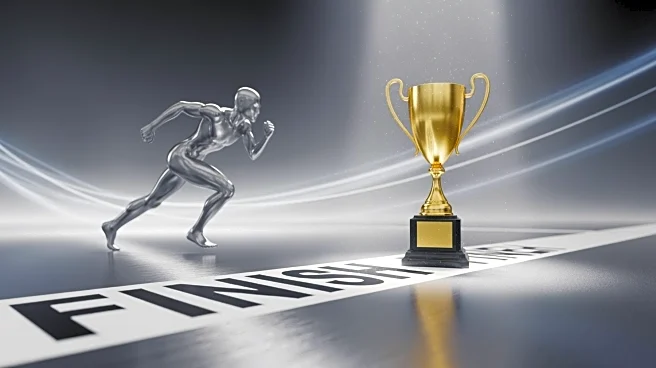What's Happening?
Natalie Grabow, an 80-year-old grandmother from Mountain Lakes, New Jersey, has made history by becoming the oldest woman to complete the Ironman World Championship. The event took place in Kailua-Kona,
Hawaii, where Grabow successfully finished the triathlon, which includes a 2.4-mile swim, a 112-mile bike ride, and a 26.2-mile run. Despite facing challenges such as rough waves and intense humidity, Grabow completed the race in 16 hours, 45 minutes, and 26 seconds. Her achievement is notable as more than 60 other athletes of various ages dropped out during the competition. Grabow attributes her success to consistent movement and staying strong, emphasizing the importance of physical activity for mental strength and confidence.
Why It's Important?
Grabow's accomplishment highlights the potential for older adults to engage in rigorous physical activities and achieve remarkable feats. Her story serves as an inspiration for seniors and underscores the importance of maintaining physical fitness as a means to enhance mental well-being and confidence. This achievement may encourage more elderly individuals to participate in sports and physical activities, challenging societal perceptions about age and physical capability. Additionally, Grabow's success could influence public health discussions, promoting active lifestyles among older populations to improve health outcomes and quality of life.
What's Next?
Following her historic completion of the Ironman World Championship, Grabow plans to take a week off for recovery. She has expressed interest in participating in another Ironman triathlon outside of Kona, with the potential goal of matching the record set by Madonna Buder, who completed an Ironman race at the age of 82. Grabow's future endeavors may continue to inspire others and contribute to the growing trend of senior athletes pushing boundaries in competitive sports.
Beyond the Headlines
Grabow's achievement may have broader implications for the sports industry, particularly in terms of inclusivity and age diversity. Her participation and success in such a demanding event could lead to increased support and resources for older athletes, encouraging sports organizations to create more opportunities for seniors. Additionally, her story may prompt discussions on the role of physical activity in aging, potentially influencing policies related to health and wellness programs for the elderly.














